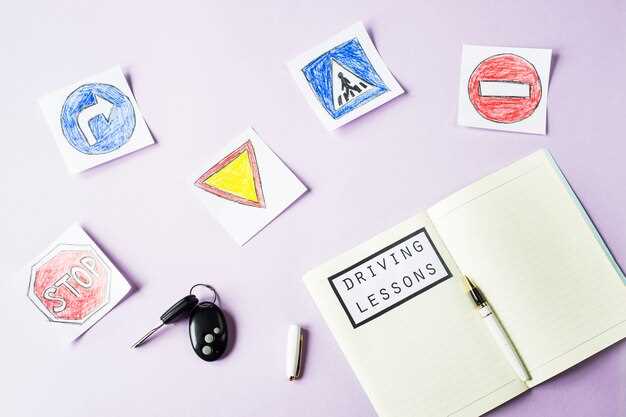
Every day, millions of drivers navigate roads filled with unpredictable conditions and varying degrees of traffic. To enhance safety and reduce the risk of accidents, adopting defensive driving techniques is essential. These tips are not merely suggestions; they are critical strategies that contribute to safer driving habits and protect both you and other road users.
Defensive driving entails anticipating potential hazards and making informed decisions based on a comprehensive understanding of the surroundings. By focusing on awareness and preparedness, drivers can effectively minimize the chances of collisions and improve overall road safety. In this article, we will explore key defensive driving tips that empower you to take control of your driving experience and cultivate a responsible attitude behind the wheel.
Implementing these defensive driving tips can significantly impact your daily commute, transforming it into a safer and more enjoyable journey. Let’s delve into practical strategies that will help you become a more vigilant and responsible driver on today’s busy roads.
Anticipating Potential Hazards While Driving in Urban Areas

Urban driving presents a unique set of challenges that require heightened awareness and adaptability. One of the key tips for ensuring safety is to remain vigilant about your surroundings. This means keeping an eye on pedestrians, cyclists, and other vehicles that may appear suddenly. Always anticipate that someone may step off a curb or that a cyclist might swerve unexpectedly.
Additionally, urban environments often feature complex traffic patterns. Pay attention to traffic signals, signs, and road markings. Being familiar with local traffic regulations can aid immensely in making informed decisions when driving. Don’t hesitate to yield to pedestrians at crosswalks, as their right of way is paramount for safety.
Congested streets can lead to sudden stops or lane changes by other drivers. Maintaining a safe following distance allows you to react promptly if the vehicle in front of you brakes unexpectedly. Always be prepared for unexpected obstacles, such as construction zones, potholes, or debris on the road, which can further affect the flow of traffic.
Another critical aspect of urban driving is recognizing and predicting driver behavior. Be cautious of drivers who may be distracted by mobile devices or passengers. They may not be as aware of their surroundings, increasing the risk of accidents. In such scenarios, reducing your speed can provide you with valuable reaction time.
Lastly, make use of your mirrors and always check blind spots before changing lanes or making turns. This proactive approach helps in identifying any potential hazards nearby. Implementing these defensive driving tips will significantly enhance your safety while navigating the hustle and bustle of urban roadways.
Maintaining Safe Following Distances to Avoid Collisions
One of the fundamental aspects of defensive driving is maintaining a safe following distance. This practice is essential for ensuring safety on the road, as it allows drivers to react promptly to unexpected situations. A proper following distance gives you the time needed to brake or maneuver, reducing the risk of collision with the vehicle ahead.
The widely recommended rule is the “three-second rule.” To implement this, choose a stationary object, such as a sign or a tree, and start counting as the vehicle in front passes it. If you reach the object before counting to three, you are too close. This rule can be adjusted for different driving conditions; for example, increase your following distance in adverse weather, heavy traffic, or when driving a larger vehicle.
Situational awareness is crucial when determining the appropriate distance. Factors such as speed, road conditions, and traffic can affect how quickly you need to stop. When driving at higher speeds, it’s vital to increase your following distance to maintain maximum reaction time. Similarly, when roads are wet or icy, the stopping distance increases due to decreased traction.
In addition to improving safety for yourself, maintaining a proper following distance enhances safety for all road users. It discourages aggressive driving behaviors, such as tailgating, which can lead to dangerous scenarios. Always remember that defensive driving includes being mindful of how your behavior impacts others on the road.
In conclusion, adopting a disciplined approach to maintaining safe following distances is a crucial element of safety in driving. By staying aware and adjusting your distance according to the situation, you significantly reduce the chance of collisions, ensuring a safer experience for everyone on the road.
Utilizing Mirrors and Blind Spot Awareness to Enhance Safety

One of the key components of defensive driving is maintaining a comprehensive understanding of your vehicle’s surroundings. Utilizing mirrors effectively and being mindful of blind spots significantly contributes to overall road safety.
Firstly, regularly adjusting your mirrors is essential. Ensure that your rearview mirror provides a clear view of the road behind you, while side mirrors should be positioned to minimize blind spots. Ideally, you should be able to see a small portion of your vehicle in the side mirrors; this helps in maximizing the view of adjacent lanes.
Next, frequent checks of your mirrors while driving are crucial. Before changing lanes or merging, always look in your mirrors to assess the position of other vehicles. This practice not only enhances safety but also allows for more proactive decision-making on the road.
Blind spots are areas around your vehicle that are not visible through mirrors. Understanding the location of these zones is vital. Take a moment to identify where your car’s blind spots are located, typically directly behind the rear pillars and slightly to the sides. When changing lanes, it is vital to turn your head and visually check these areas, supplementing your mirror usage.
In addition, consider the use of technology. Many vehicles are equipped with blind spot monitoring systems that alert you to vehicles in hard-to-see areas. While these systems enhance safety, they should not replace the need for careful visual checks.
Lastly, remember that a defensive driving mindset also includes anticipating the actions of others on the road. Be aware of nearby vehicles that may not be visible in your mirrors. By consistently utilizing mirrors and maintaining awareness of blind spots, you improve your defensive driving skills, ensuring a safer driving environment for yourself and others.



